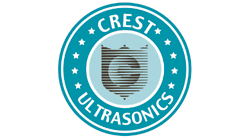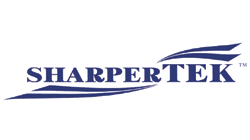Extending Ultrasonic Cleaning Solution Performance
|
Let Us Help We can help you
find the perfect storage unit for your needs and budget. |
While biodegradable ultrasonic cleaner solution concentrates are economical to use, extending ultrasonic cleaning solution performance makes good sense. Here we supply several steps savvy operators can employ to maintain desired cleaning cycle results.
We start with a quick overview of
Two Basic Types of Ultrasonic Cleaning Solutions*
They are broadly classified as emulsifying and demulsifying ultrasonic cleaning solutions. These govern "where the dirt goes" when removed by the powerful cavitation action of your ultrasonic cleaner.
For example, when removing greases and oils from parts, a cleaning solution can be characterized as emulsifying when oily contaminants remain suspended, and demulsifying when they rise to the surface.
Hard contaminants such as turnings, filings and dirt particles fall to the bottom of the tank. These must also be addressed as part of extending ultrasonic cleaning solution performance as well as cleaning tank maintenance.
Low-volume, low-throughput operations suggest an emulsifying cleaner such as elma tec clean A2. Emulsifying formulations require close observation because accumulated contaminants inhibit ultrasonic cleaning efficiency and should be replaced frequently.
 That’s because contaminants remain in suspension and will adhere to the finished product when removed from the bath. This may require a post-cleaning rinse.
That’s because contaminants remain in suspension and will adhere to the finished product when removed from the bath. This may require a post-cleaning rinse.
High-volume, high-throughput cleaning of oil-contaminated pieces should be cleaned with a demulsifying cleaner such as elma tech clean A4 where oils rise to the surface. High-volume operations provide a number of opportunities to extend ultrasonic cleaning solution performance.
*Cleaning solutions can also be defined as acidic, alkaline or neutral. For the curious, these are more fully described in our post selecting ultrasonic cleaning solutions.
Steps and Tools to Extend Ultrasonic Cleaning Solution Performance
As noted above, emulsifying formulas hold contaminants in suspension, calling for replacement when cleaning efficiency drops.
Demulsifying formulations such as the widely used elma tec clean A4 provide performance extending opportunities.
For Operations Using Benchtop Ultrasonic Cleaners
Operators using benchtop ultrasonic cleaners such as the Elmasonic Select Series should pay close attention to the bath and as required skim off and set aside contaminants floating on the surface. Place these in a special container and dispose of them along with spent solutions according to local regulations.
When it is time to replace the cleaning solution, take the time to thoroughly clean the tank and remove settled contaminants such as filings, turning and other hard particles. If not removed, these can eventually wear through the tank bottom.
This step is extremely important. Follow the user manual instructions and never use an abrasive cleaner.
Cleaning Solution Maintenance for Industrial Ultrasonic Cleaners
Floor-mounted high capacity industrial units may be equipped with several options aimed at extending ultrasonic cleaning solution performance.
Examples are ultrasonic cleaners with a skimming ledge to channel floating contaminants into a holding tank for later disposal
If an emulsifying cleaning solution is used in industrial-sized units an option is to connect an oil separator to the equipment. The solution is circulated through the separator where suspended oil is removed and the treated solution returned.
Ask us about the Shiraclean industrial ultrasonic cleaners equipped with solution filtration and available from our sister company.
Options to extend ultrasonic cleaning solution performance are also offered on the industrial Elma x-tra ST units.
The Elma Filter Option prolongs cleaning solution effectiveness by monitoring and removing contaminants and fine particles during cleaning cycles.
Benefits include extended bath effectiveness, lower water consumption and reduced tank erosion from settled particles.
When flow rate decreases due to contaminant buildup, filter cartridges are easily replaced by shop personnel.
Elma Filter is available as an option on all newly purchased Elma xtra ST units or can be retrofitted on existing xtra ST equipment.
The Elma Rinse options using tap water to remove heavy, loose contaminants before ultrasonic cleaning is another way to extend cleaning ultrasonic cleaning solution performance. After cleaning, spray rinse products with tap or demineralized (DM) water provided by the filtration system to remove remaining residues.
The Elma Rinse option can be table or wall mounted and is equipped with two rinsing wands, one for tap and one for demineralized water.
Summary
Economies of operation and ensuring satisfactory results are benefits that can be achieved when steps are taken to extend ultrasonic cleaning solution performance. This applies regardless of the size of your ultrasonic cleaning equipment.
Questions on Extending Ultrasonic Cleaning Solution Performance?
Contact our scientists for expert, unbiased advice, including selecting the right unit and cleansing solution formulation to meet your requirements.






